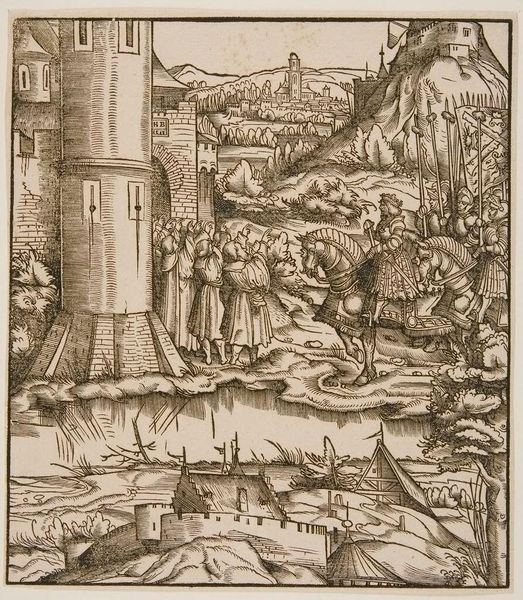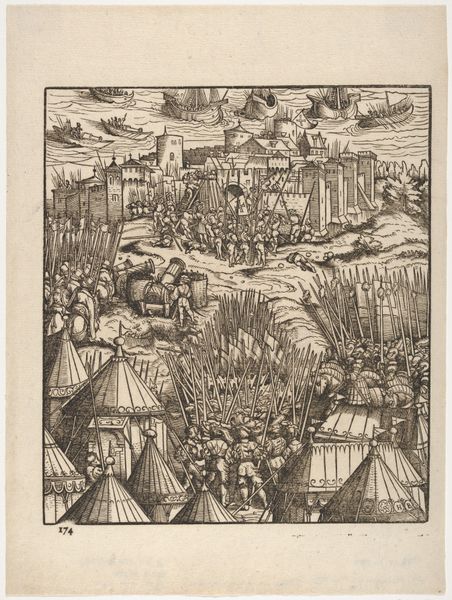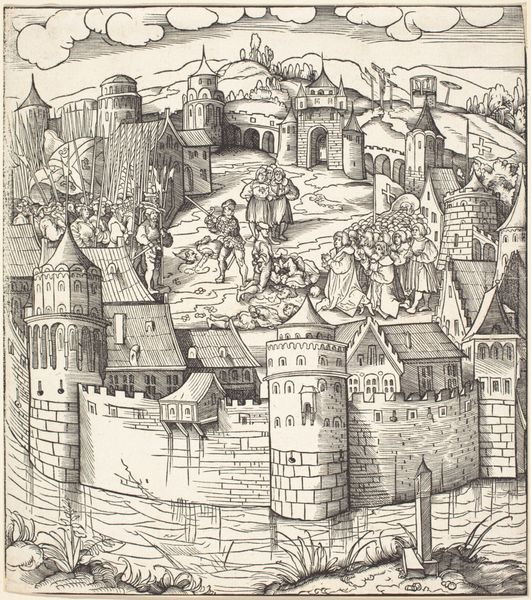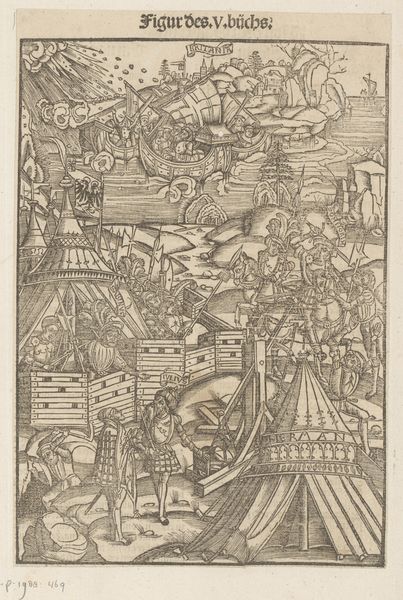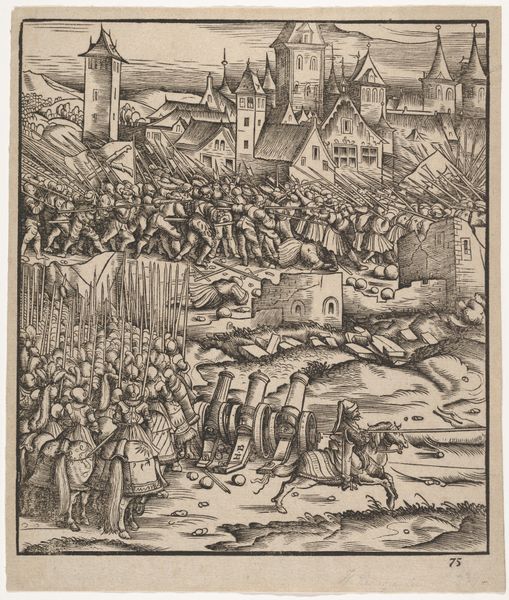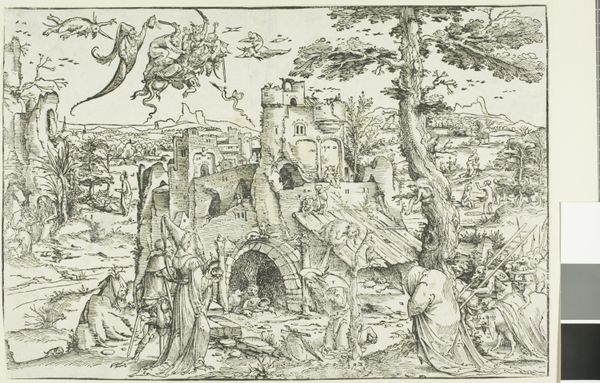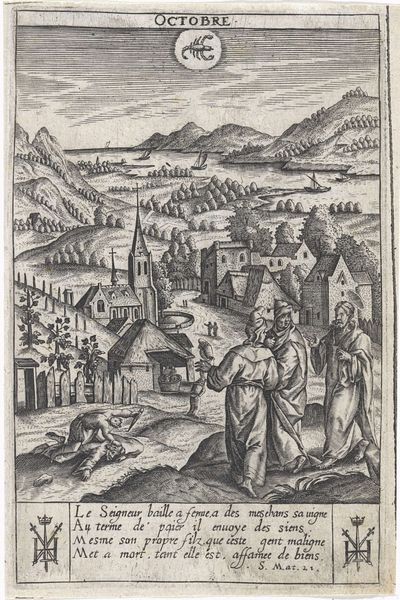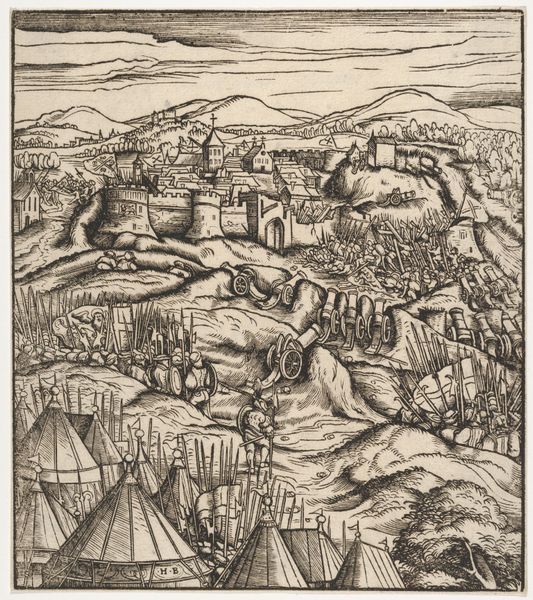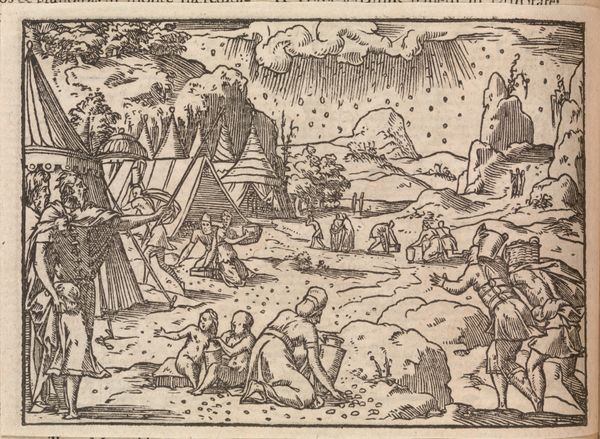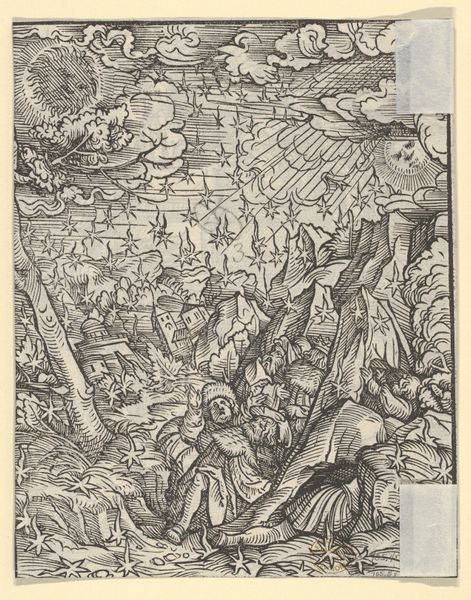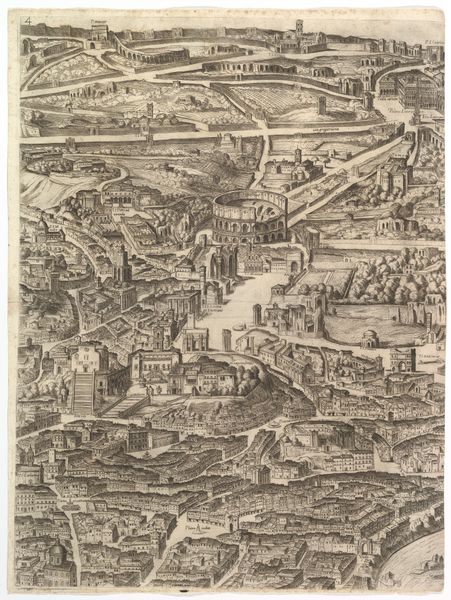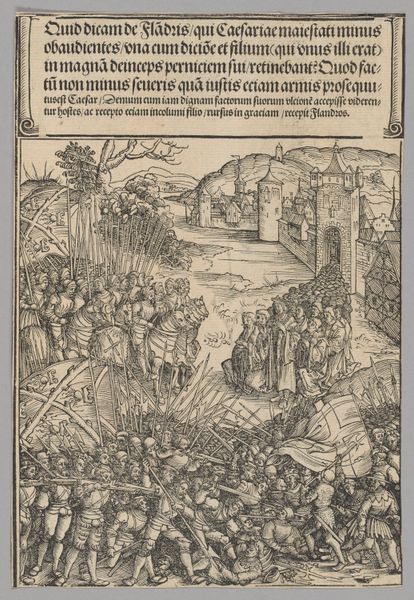
The Surrender of the Venetian Townships, from Der Weisskunig 1775 - 1800
0:00
0:00
drawing, print, woodcut
#
drawing
#
pen drawing
# print
#
landscape
#
soldier
#
woodcut
#
horse
#
men
#
history-painting
#
northern-renaissance
#
building
Dimensions: Sheet: 8 3/4 × 7 11/16 in. (22.3 × 19.6 cm)
Copyright: Public Domain
Editor: Here we have "The Surrender of the Venetian Townships, from Der Weisskunig" made between 1775 and 1800 by Hans Burgkmair. It's a woodcut. I’m struck by the clear division between the surrendering townspeople and the armed procession. What's your take on this composition? Curator: The stark division you observe isn’t just visual, but profoundly symbolic. It highlights the power dynamics inherent in acts of surrender. Consider the historical context: Burgkmair created this work within a series idealizing Emperor Maximilian I. It serves as propaganda, illustrating his might. The “losers” are not given space or stature, while the Emperor looms with a show of force and visual assertiveness. Do you notice anything else about the portrayal of these groups? Editor: Well, the townspeople are all clustered together and dressed in similar robes, while the soldiers have unique armor and weaponry, making them individuals. Does this play into that power dynamic, too? Curator: Precisely! The artist uses the visual language of uniformity versus individuality to represent those with authority versus those without. And where does this scene take place? What is Burgkmair communicating to us about society at the time with these clues? Editor: There's a fortified town surrendering to armed soldiers. It’s a depiction of dominance and control, right? How does this narrative connect to contemporary dialogues around conflict and oppression? Curator: This print offers us the possibility to critically examine how narratives of power are constructed and perpetuated. By understanding these historical representations, we can better analyze similar dynamics in contemporary society. Consider who controls the image, who tells the story, and whose perspectives are marginalized. What did you take away from our talk? Editor: I see the artwork now as a statement about historical power relationships, and how those relationships continue to manifest. It has helped me be more sensitive to context. Thank you!
Comments
No comments
Be the first to comment and join the conversation on the ultimate creative platform.
